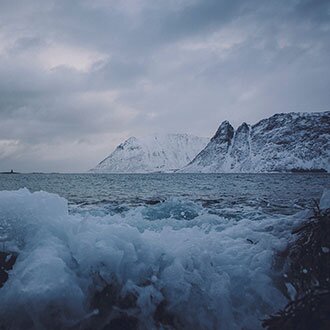Norway and the EU signed agreement on duty-free quotas
According to the new agreement, the EU will open 12 duty-free import quotas for Norwegian seafood.

Germany is a key market for Norwegian seafood, particularly for salmon, herring, and cod. The Norwegian Seafood Council maintains an active presence in the country, represented by Christine Iversen, who is based in Berlin.
The total seafood market in Germany is estimated at 1.1 million tonnes in 2024. Per capita consumption stands at 13.2 kg, which is relatively low compared to many other European countries.
Although export volumes from Norway to Germany have declined somewhat in recent years, export value has steadily increased since 2020. Salmon is by far the largest export species, but herring also holds a significant position in the German market.
Salmon
Salmon is the most consumed single seafood species in Germany, with an average consumption of 2.2 kg per person. The total salmon market is estimated at 191,000 tonnes, with Norway holding a dominant 86% market share. The remaining supply comes mainly from the Faroe Islands, the UK, and Iceland.
Salmon is the most preferred seafood among German consumers – over 60% purchased salmon at least once in 2024. It is primarily consumed at home, although around 24% is eaten out-of-home.
Smoked salmon is the largest category by value, while fresh salmon is growing rapidly in volume. Most grocery stores do not have fresh fish counters, so products are mainly sold pre-packaged.
Herring
Germany is the most important consumer market for Norwegian herring. Consumption is around 100,000 tonnes, with an additional 20% consumed out-of-home, resulting in a total of approximately 1.4 kg per person.
Herring is perceived as a traditional product, especially among older consumers, and is characterized by low innovation and limited appeal to younger demographics. This has contributed to a gradual decline in consumption. To counter this trend, efforts should focus on modernizing the product in collaboration with the value chain.
Skrei
During the season, Germany is also an important market for Norwegian skrei. The market for fresh cod is estimated at 20,000 tonnes in 2024, with Norway holding a 65% market share, and Iceland as the main competitor (26%). Skrei accounts for roughly half of this volume.
Consumers are well aware of Norway as a supplier, and skrei is clearly labeled in stores during the season. Unlike other species, skrei is more often consumed in restaurants – with a split of approximately 60% at home and 40% in restaurants.
Skrei holds a strong position in the premium segment, and with expected price increases ahead, marketing should continue to target segments that are less price-sensitive.
Saithe
As an affordable whitefish alternative, there is growth potential for Norwegian saithe in the German market. Saithe remains relatively unknown and is often confused with Alaska pollock due to similar naming (Seelachs/Alaska Seelachs).
The saithe market is estimated at around 10,000 tonnes, with Norway holding approximately 50% market share. Most of the satieh currently goes to institutions and canteens.
With increasing limitations on cod availability in recent years, satieh could become an attractive alternative. However, success depends on exporting high-quality raw material and strong collaboration with the value chain.
For more detailed information on market size, access, and our activities in Germany, please refer to the attached market plans.
According to the new agreement, the EU will open 12 duty-free import quotas for Norwegian seafood.
The Norwegian Seafood Council has so far published a weekly tariff overview showing the status of trade quotas to the EU. These weekly overviews will be replaced by our new quota overview starting from Friday, February 2, 2024.

Exporters can register via our website. The estimated time to process the application is around 1 week from the day of the application.
The Norwegian Seafood Council's office in Germany is located in Berlin. The director in Germany is Christine Iversen.
Caffamacherreihe 5
D-20355 Hamburg
Tyskland
